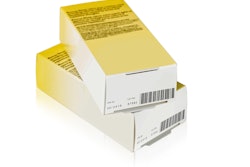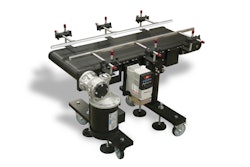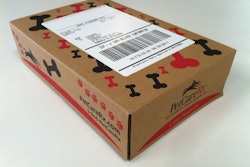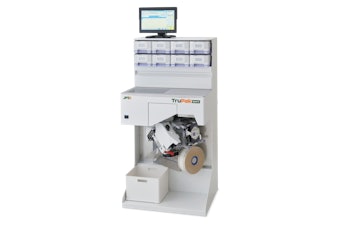However, because serialized 2D barcodes are coded onto the package, versus preprinted, it opens the door to a phenomenon known as degradation. Depending on your coding technology, the tolerances of the equipment, and the substrate of the package, tiny variances can creep into the code quality such that at the end of a packaging run, the quality may be worse than it was at the beginning. This degradation can be caused by vibration, smearing, particulate buildup, etc.
What’s particularly insidious about this is that today’s vision systems on the actual packaging line are of such high quality, they will read degraded codes that a typical barcode scanner will not. So your code may pass your vision system as readable, but then come July 2016, when wholesalers break open a case of your product and start reading your 2D codes with their scanning guns, you run the very real risk of those packages not being readable.
The risk is that goods with unreadable barcodes may be returned, resulting not only in unnecessary costs, but also in product shortages.
How to avoid this? That’s where what is known as barcode “grading” comes in. The readability of any barcode can be graded on a scale of 0.0 to 4.0 (F to A). Grades are based on many different parameters, including sharpness of edges, quiet zone, overlap of bars or symbols, relationship of one square to another within a 2D code, etc.
So it is entirely possible for the first package of the run to have a grade B, and the last package to end up with a grade D or below. To pick up these sorts of problems, it is essential to deploy continuous in-line grading, which can be something that the vision system can be programmed to handle, although experts will tell you that offline grading systems provide a more comprehensive review. Barcode grading can be incorporated into the QA sampling process.
You can also purchase special grading cards from GS1 that have samples of barcodes that can be used to calibrate your barcode grading system.
Barcode verifiers should comply with the ISO/IEC 15426-1 (linear) or ISO/IEC 15426-2 (2D) standard. This standard defines the measuring accuracy of a barcode verifier.
The current international barcode quality specification is ISO/IEC 15416 (linear) and ISO/IEC 15415 (2D). The European Standard EN 1635 has been withdrawn and replaced by ISO/IEC 15416. The original U.S. barcode quality specification was ANSI X3.182. (UPCs used in the U.S. - ANSI/UCC5).
Depending on the parameter, each ANSI test is graded from 0.0 to 4.0 (F to A), or given a pass or fail mark. Each grade is determined by analyzing the scan reflectance profile (SRP)—an analog graph of a single scan line across the entire symbol. The lowest of the eight grades is the scan grade, and the overall ISO symbol grade is the average of the individual scan grades. For most applications, a 2.5 (C) is the minimum acceptable symbol grade.
Compared with a reader, a verifier measures a barcode’s optical characteristics to international and industry standards. The measurement must be repeatable and consistent. Doing so requires constant conditions, such as distance, illumination angle, sensor angle, and verifier aperture. Based on the verification results, the production process can be adjusted to print higher-quality barcodes that will scan down the supply chain.
This standard defines the quality requirements for barcodes and Matrix Codes (also called Optical Codes). As of 2011, the ISO workgroup JTC1 SC31 was developing a Direct Part Marking (DPM) quality standard, ISO/IEC TR 29158. International standards are available from the International Organization for Standardization (ISO). These standards are also available from local/national standardization organizations, such as ANSI, BSI, DIN, NEN, and others.
Grading barcodes is a step that’s often overlooked because it’s never been an issue before. Be sure not to get caught in this trap.
Here are helpful links on barcode grading:
GS1 Bar Code Verification For Linear Symbols (PDF)
GS1 barcode implementation: Build a Barcode Quality Plan
Liked this article? Download the entire playbook here.





















